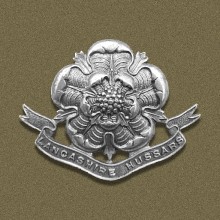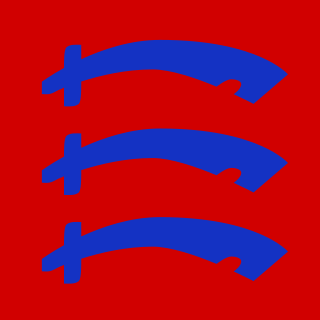
The Yorkshire County Division was a formation of the British Army in the Second World War, its headquarters were formed on 24 February 1941, and became operation on 19 March. It was commanded by three officers, Major-General the Hon E. F. Lawson until 11 September, Brigadier G. H. Gotto until 23 September, Major-General E. C. Hayes until 20 November and then Gotto again. It was an infantry only formation consisting of three Independent Infantry Brigades (Home). Combat support, artillery, engineers etc., would be provided by other local formations. It was directly under Northern Command until 9 March and then came under I Corps. The Headquarters was redesignated the East Riding District on 1 December 1941.

The King's Own Royal Regiment (Lancaster) was a line infantry regiment of the British Army. It served under various titles and fought in many wars and conflicts, including both the First and the Second World Wars, from 1680 to 1959. In 1959, the regiment was amalgamated with the Border Regiment to form the King's Own Royal Border Regiment.

The 146th Infantry Brigade was an infantry brigade formation of the British Army, part of the Territorial Force with the 49th Infantry Division. The brigade saw active service during both the First and the Second World Wars, and during the early part of the Cold War. The brigade was active from 1908 until 1967 when it was finally disbanded. The brigade was reformed in 1983, though with a much smaller and insignificant role before finally disbanding again in 1993.

The Lancashire Hussars was a British Army unit originally formed in 1798. It saw action in the Second Boer War, the First World War and the Second World War. In 1969, the regiment reduced to a cadre and the Yeomanry lineage discontinued.
The 157th Brigade was an infantry brigade of the British Army. The brigade fought in both the First and the Second World Wars, assigned to 52nd (Lowland) Infantry Division.

The 37th Brigade was an infantry brigade of the British Army that served in both the First and the Second World Wars.
The 213th Brigade was a Home Defence and training formation of the British Army during both the First and Second World Wars.
215th Brigade was a Home Service formation of the British Army during the First and the Second World Wars.
The 216th Brigade was a Home Service formation of the British Army during the First and the Second World Wars.
217th Brigade was a Home Service formation of the British Army during the First and the Second World Wars.

The 219th Brigade was a Home Service formation of the British Army during the First and the Second World Wars.
220th Brigade was a Home Service formation of the British Army during the First and Second World Wars.
The 208th Independent Infantry Brigade (Home) was a short-lived Home Defence formation of the British Army during the Second World War.
The 221st Independent Infantry Brigade (Home) was a short-lived Home Defence formation of the British Army during the Second World War.
The 222nd Infantry Brigade was a Home Service formation of the British Army that existed under various short-lived titles in both the First and Second World Wars
The 226th Infantry Brigade was a Home Service formation of the British Army that existed under various short-lived titles in both World War I and World War II.

The 223rd Brigade was a Home Defence formation of the British Army in the First and the Second World Wars. It existed under several variations of the 223 Brigade title, and was eventually converted into an airborne formation.
The 224th Brigade was a Home Defence formation of the British Army in World War I and World War II. It existed under several variations of the 224th Brigade title.
The 225th Brigade was a Home Defence formation of the British Army in the First and the Second World Wars. It existed under several variations of the 225th Brigade title.

The 148th Infantry Brigade was an infantry brigade formation of the British Army that served in both the First and briefly in the Second World War as part of the 49th Infantry Division and disbanded after the war.









